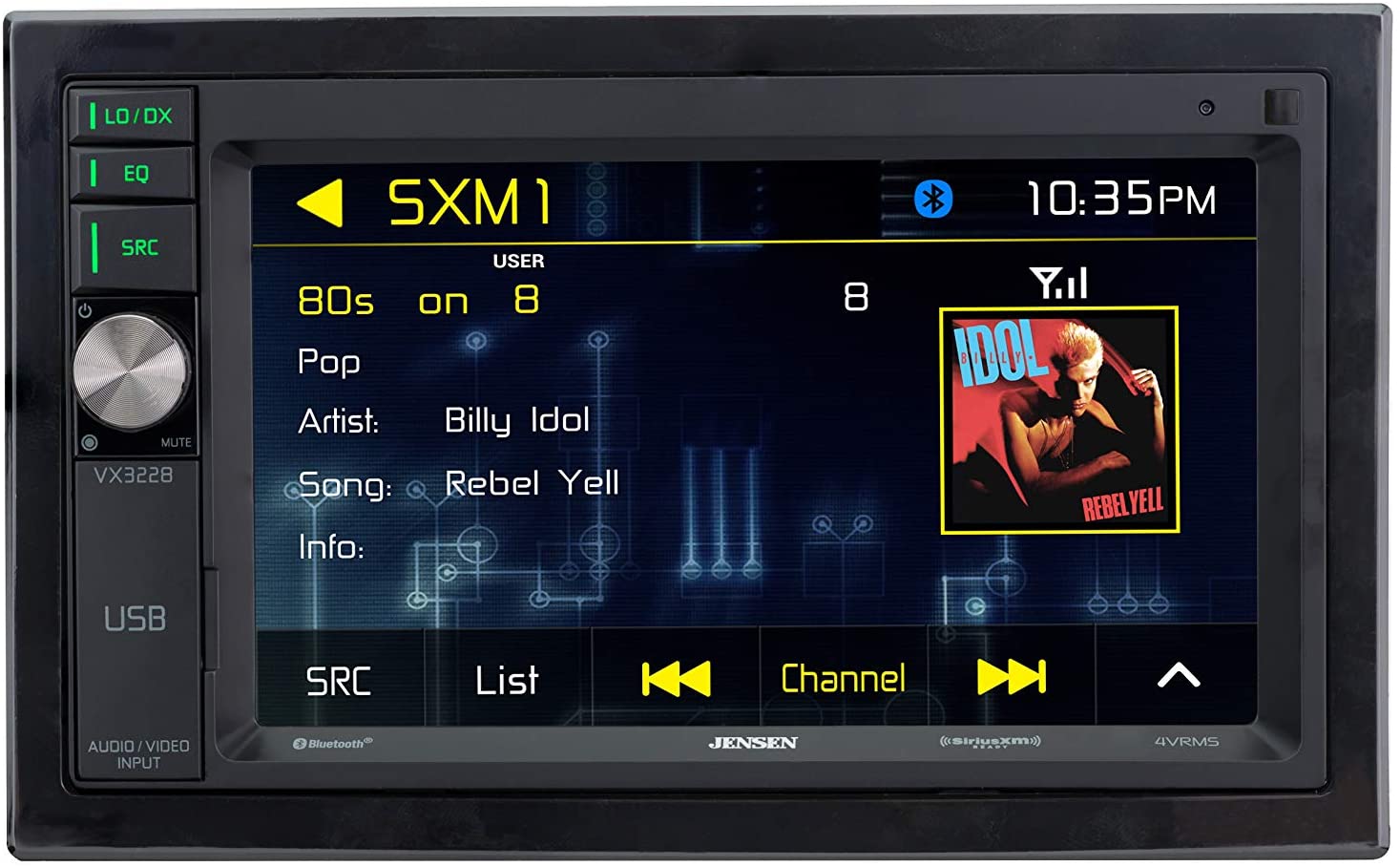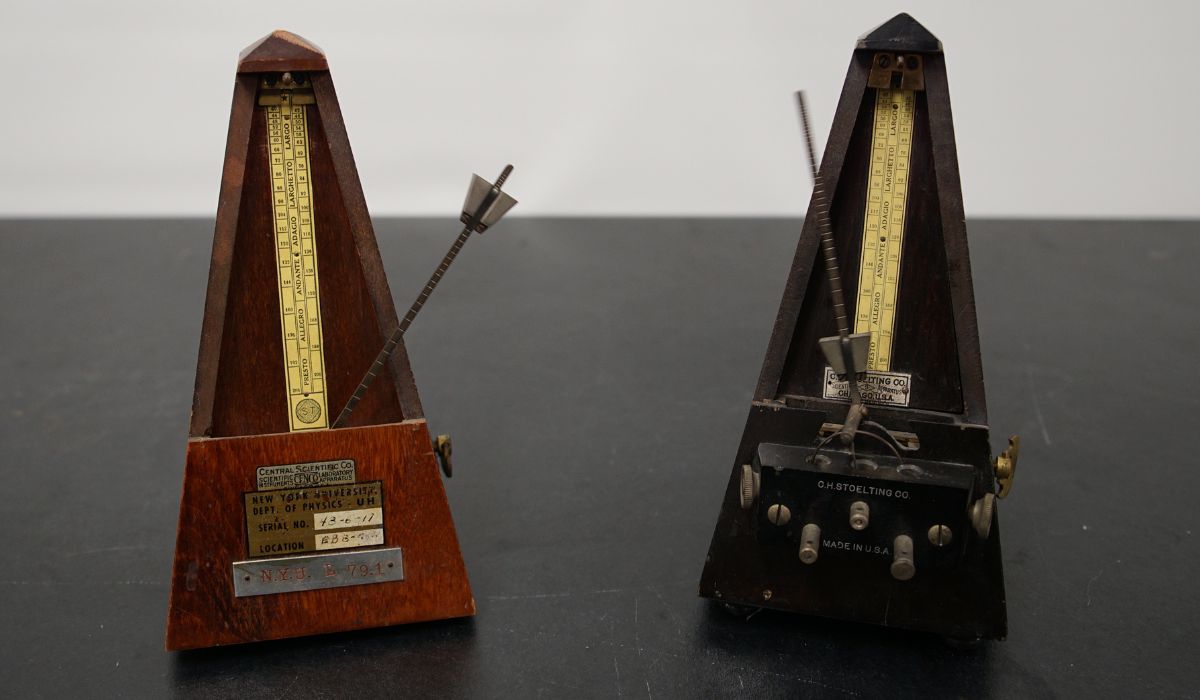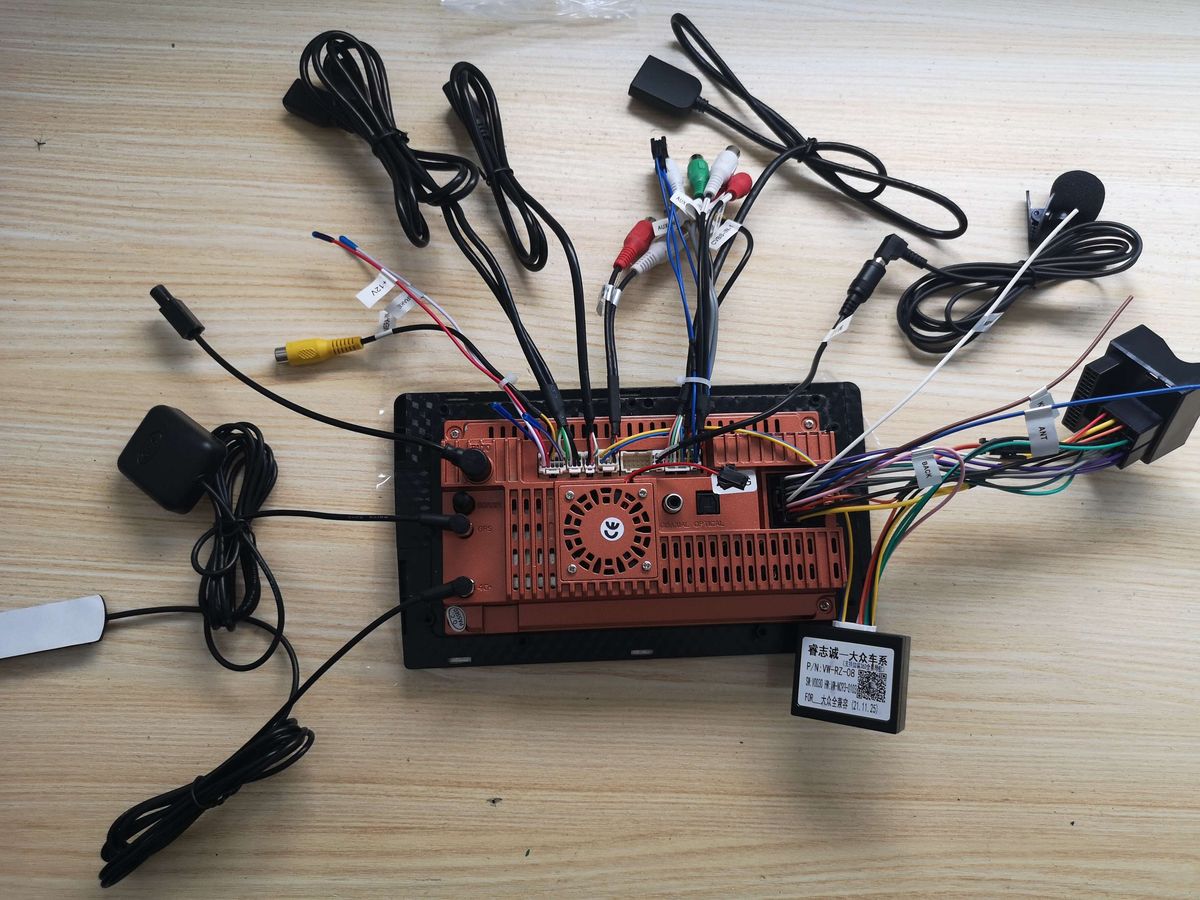Home>Production & Technology>Stereo>What Does Att Mean On A Car Stereo


Stereo
What Does Att Mean On A Car Stereo
Modified: January 22, 2024
Learn what the "ATT" button means on a car stereo and discover how it can enhance your stereo experience. Find out how to use and customize this feature for optimal sound quality.
(Many of the links in this article redirect to a specific reviewed product. Your purchase of these products through affiliate links helps to generate commission for AudioLover.com, at no extra cost. Learn more)
Table of Contents
Introduction
Car stereos have come a long way since their inception, and many modern car audio systems offer a wide range of features and functionalities. One such feature that you may come across is labeled as “ATT.” If you’re unfamiliar with this term and wondering what it means, you’ve come to the right place.
ATT, which stands for “Attenuation,” is a feature found on car stereos that allows you to control the volume levels of the audio output. It is essentially a volume reduction feature that helps to minimize distortion and provide a more balanced sound experience in your vehicle. Understanding how ATT works and its benefits can greatly enhance your overall audio quality and user experience.
Throughout this article, we’ll delve deeper into the world of car stereo ATT and explore its functionality, benefits, potential drawbacks, and how to use it effectively. Whether you’re a music enthusiast, audiophile, or simply looking to optimize your car audio experience, understanding ATT can make a significant difference.
Understanding ATT on Car Stereos
ATT, as mentioned earlier, stands for Attenuation. In the context of car stereos, it refers to the ability to adjust the volume levels of the audio output. Attenuation is the process of reducing the intensity or amplitude of a signal, which in this case is the sound produced by your car stereo.
The purpose of including ATT on car stereos is to provide a means of reducing the volume without altering the overall audio quality. It allows you to maintain a balance between the volume level and the clarity of the sound. This feature is particularly useful in situations where audio sources tend to have significant volume variations, such as when switching from a quiet song to a loud one or adjusting the volume when facing background noise.
ATT functions by lowering the volume level on your car stereo to a specific degree. This reduction in volume helps to prevent distortion, clipping, or any harsh sound that may result from playing audio at high levels. By attenuating the audio output, ATT ensures a more enjoyable and balanced listening experience, especially when driving on the highway or in noisy environments.
It is important to note that the implementation and behavior of ATT may vary depending on the car stereo manufacturer and model. Some car stereos may have a dedicated ATT button or knob, while others may include it as part of a broader equalizer or sound settings menu. Familiarizing yourself with your specific car stereo system will help you effectively use and benefit from the ATT feature.
The Functionality of ATT
The functionality of ATT on a car stereo revolves around its ability to reduce the volume levels without compromising audio quality. When you activate the ATT feature, it lowers the volume output by a predetermined amount, typically around 10 dB. This reduction prevents audio distortion and allows for a smoother, more pleasant listening experience.
ATT works by selectively attenuating the audio frequencies across the entire sound spectrum. This means that all frequencies, from low bass to high treble, are equally affected by the volume reduction. By maintaining the balance between different frequencies, ATT ensures that the overall audio output remains clear, regardless of the volume level.
One important aspect of ATT functionality is that it does not affect other audio settings such as bass, treble, or balance. These settings remain unchanged, and ATT focuses solely on adjusting the volume level. This is beneficial because it allows you to customize the sound profiles of your car stereo while still having the option to engage the ATT feature when needed.
Additionally, many car stereos incorporate automatic volume control functionality into the ATT feature. This means that the ATT feature can automatically adjust the volume levels based on the driving conditions. For example, if you’re traveling at high speeds, the car stereo may automatically activate ATT to compensate for wind and road noise, ensuring a consistent and comfortable listening experience.
Overall, the functionality of ATT contributes to a more enjoyable and immersive audio experience in your vehicle. It allows you to maintain a balance between volume and audio quality, ensuring that your favorite songs, podcasts, or audiobooks sound their best regardless of external factors or volume inconsistencies.
Benefits of Using ATT on a Car Stereo
The ATT feature on a car stereo offers several benefits that can greatly enhance your driving and listening experience:
-
Prevents audio distortion: One of the main advantages of using ATT is that it helps to prevent audio distortion. By reducing the volume level, it prevents the sound from becoming too loud and overwhelming, which can result in clipping or distortion. This ensures that you can enjoy your music without any unpleasant sound artifacts.
-
Enhances audio clarity: ATT maintains a balanced audio output by attenuating all frequencies equally. This helps to preserve the clarity of the sound, even at lower volume levels. You can still hear the details and nuances of the music, ensuring a more immersive and enjoyable listening experience.
-
Improves overall sound quality: By preventing distortion and maintaining clarity, ATT contributes to overall sound quality improvement. It allows you to appreciate the full range of frequencies in your music, making it sound more vibrant, balanced, and pleasing to the ears.
-
Provides a comfortable listening experience: Sometimes you may encounter situations where the audio source has significant volume variations. Switching from a quiet song to a loud one, or adjusting the volume when facing road and wind noise can be jarring. By using ATT, you can ensure smooth transitions and a comfortable listening experience without sudden changes in loudness.
-
Adapts to different driving conditions: Many car stereos with ATT feature automatic volume control functionality that adjusts the volume levels based on the driving conditions. This allows for a consistent audio experience, compensating for external noise factors and ensuring optimal sound quality regardless of speed or noise level.
The benefits of using ATT on a car stereo are clear – it helps to maintain audio quality, prevent distortion, and provide a comfortable and enjoyable listening experience. Whether you’re a music lover, podcast enthusiast, or simply want to enhance your in-car entertainment, the ATT feature can be a valuable addition to your audio settings.
Potential Drawbacks of ATT Feature
While the ATT feature on car stereos offers several benefits, it is important to consider potential drawbacks that may arise:
-
Loss of volume range: When using ATT, the volume range of your car stereo becomes limited. The maximum volume level will be lower compared to when ATT is turned off. This may affect your ability to achieve extremely loud volume levels if that is your preference.
-
Inconsistent sound levels: In some cases, engaging the ATT feature may lead to inconsistent sound levels across different audio sources or types of music. Certain songs or genres may require adjustments to maintain a consistent audio experience, as the volume reduction may affect them differently.
-
Effect on bass response: ATT primarily affects the overall volume level and doesn’t specifically target or alter the bass frequencies. However, due to the volume reduction, you may perceive a decrease in bass response. This can impact the overall balance of the sound, particularly if you’re listening to bass-heavy genres like hip-hop or electronic music.
-
Dependence on car stereo quality: The effectiveness of the ATT feature may vary depending on the quality and capabilities of your car stereo. Some lower-end or older models may not provide as precise or effective volume reduction, potentially leading to less satisfactory results.
It’s essential to keep in mind that the potential drawbacks mentioned above may not be prevalent in all cases and will vary depending on the specific car stereo model and personal preferences. It’s always a good idea to experiment with the ATT feature to find the balance that suits your listening preferences and the capabilities of your car audio system.
Despite these potential drawbacks, many users find that the benefits of using ATT outweigh any minor limitations. It offers a convenient and effective way to maintain audio quality and achieve a comfortable listening experience while on the road.
How to Use ATT on a Car Stereo
Using the ATT feature on your car stereo is relatively straightforward, although the specific steps may vary depending on the make and model of your stereo. Here is a general guide on how to use ATT:
-
Locate the ATT button or menu: Look for the ATT button on your car stereo’s control panel or check the sound settings menu for the ATT option. It may be labeled explicitly as “ATT” or “Attenuation,” or it may be a part of the equalizer or sound settings.
-
Enable ATT: Press the ATT button or select the ATT option in the sound settings menu to activate the feature. The ATT indicator may light up or display on your car stereo’s screen to indicate that it is engaged.
-
Adjust the volume: Once ATT is enabled, you can adjust the volume level using the car stereo’s volume control knob or buttons as you would normally. Keep in mind that the maximum volume level will be lower than when the ATT feature is disabled.
-
Experiment with different settings: Depending on your personal preferences and the specific audio source, you may want to fine-tune the ATT feature. Some car stereos allow you to adjust the level of attenuation or set it to automatic mode, where the stereo itself decides the appropriate volume reduction based on external factors. Explore the different options available to find the setting that suits your needs best.
Remember that the specific steps and options for using ATT may differ from one car stereo to another. Consult your car stereo’s user manual or reach out to the manufacturer’s support for detailed instructions specific to your model.
By familiarizing yourself with the usage of the ATT feature, you’ll be able to optimize your audio experience, maintain a comfortable listening level, and ensure clarity and balance in your car stereo sound.
Troubleshooting Common Issues with ATT
While using the ATT feature on your car stereo, you may encounter some common issues. Here are a few troubleshooting tips to help address these problems:
-
No noticeable volume reduction: If you engage the ATT feature but don’t experience any volume reduction, ensure that ATT is enabled correctly. Double-check if the ATT indicator is illuminated or displayed on your car stereo’s screen. If the issue persists, consult your car stereo’s user manual or contact the manufacturer’s support for assistance.
-
Inconsistent volume levels: If you notice that the volume levels are inconsistent when using ATT across different songs or audio sources, try adjusting the ATT setting or experimenting with the automatic ATT mode if available. This can help achieve a more consistent and balanced audio experience.
-
Decreased bass response: If you feel that the ATT feature is affecting the bass response disproportionately, you may want to adjust the bass settings or equalizer on your car stereo. Increasing the bass levels can help compensate for any perceived loss in bass while using ATT.
-
Limited volume range: If you find that the maximum volume level is significantly lower when ATT is enabled, consider adjusting your car stereo’s audio settings. Some stereos allow you to customize the maximum volume output or adjust the gain levels to accommodate for the volume reduction of the ATT feature.
-
Compatibility issues: In rare cases, certain audio sources or devices may have compatibility issues with the ATT feature. If you experience any abnormal behavior or unexpected audio quality when using ATT with specific devices, try connecting different audio sources or consult the manufacturer’s support for guidance.
If you encounter persistent issues or are unable to resolve any problems with the ATT feature, reaching out to your car stereo’s manufacturer or seeking professional assistance from an audio technician can help identify and address the underlying cause.
By troubleshooting common issues with ATT, you can ensure a smooth and hassle-free experience while enjoying the benefits of this feature on your car stereo.
Conclusion
The ATT feature on car stereos, which stands for Attenuation, offers a convenient and effective way to control volume levels and maintain audio quality while enjoying your favorite music or audio content on the road. By reducing the volume without compromising clarity, ATT helps prevent distortion and provides a more pleasant listening experience.
We explored the functionality of ATT, understanding how it works to attenuate volume levels across the audio spectrum. We discussed the benefits of using ATT, including preventing audio distortion, enhancing audio clarity, improving overall sound quality, and providing a comfortable listening experience. It adapts to different driving conditions, ensuring consistent audio quality regardless of external noise factors.
While there are potential drawbacks to consider, such as a limited volume range or inconsistent sound levels, many users find the benefits of ATT outweigh these minor limitations. By familiarizing yourself with your car stereo’s ATT feature and adjusting settings as needed, you can optimize your audio experience and enjoy a balanced sound that suits your preferences.
If you encounter any issues with ATT, troubleshooting common problems like inconsistent volume levels or decreased bass response can help address them effectively. However, seeking assistance from the car stereo manufacturer or a professional audio technician may be necessary for more complex issues.
In conclusion, the ATT feature on car stereos offers a valuable tool for controlling volume levels and maintaining audio quality. By utilizing this feature, you can enhance your in-car entertainment experience and enjoy your favorite music with optimal clarity and comfort.











